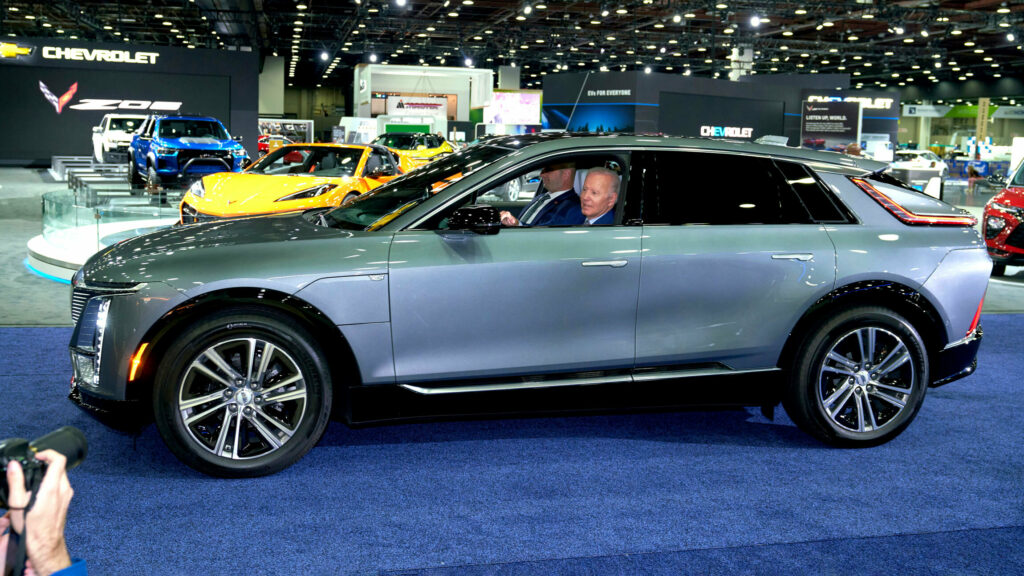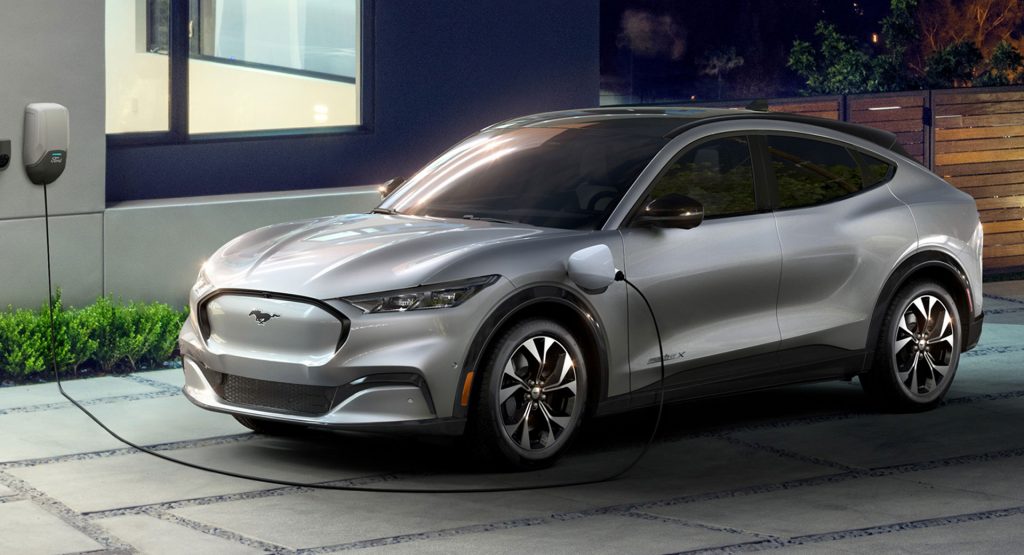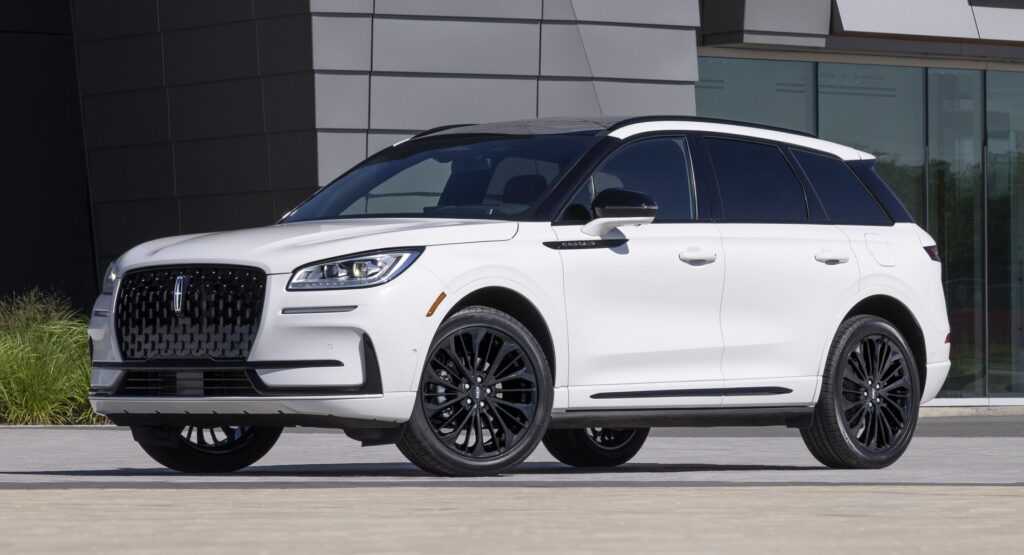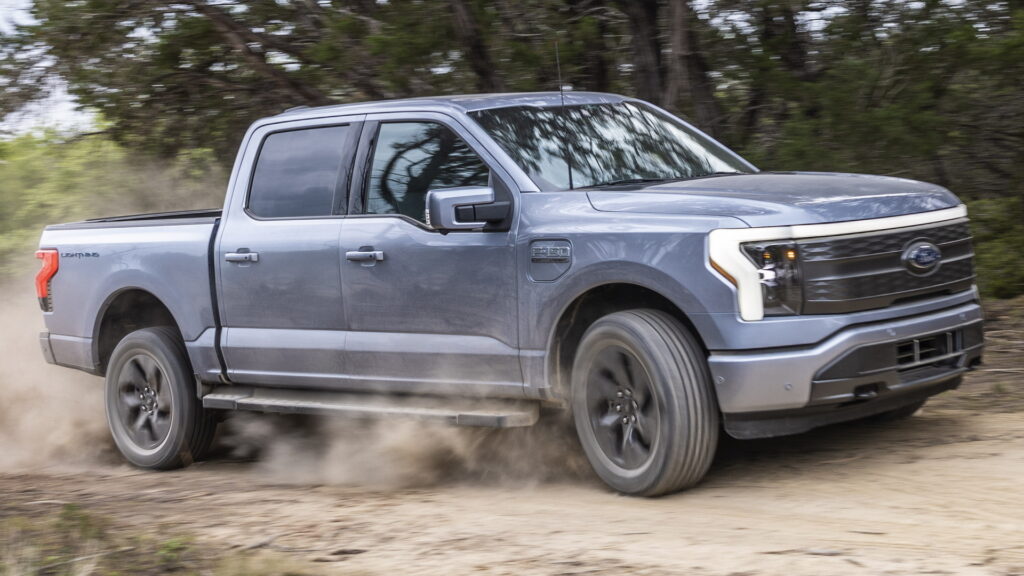<!—->
The Lyriq is classed as a car for tax purposes, but $60k+ price is over threshold for electric car tax credits
5 hours ago
 –>
–> 
by Chris Chilton
–>
The IRS has opened a can of worms whose lid was already struggling to stay closed. The U.S. department responsible for taxation has published a list of electric vehicles that qualify for tax credits under the terms of last year’s Inflation Act, and several big names have been shocked to find their cars don’t qualify.
It’s all to do with how the vehicle is classified, specifically whether it’s a truck, an SUV or an ‘other,’ which is IRS-speak for cars. For a car to qualify it must cost no more than $55,000, but SUVs and trucks can cost up to $80,000 and still be eligible for credits. To the surprise of many, though, various vehicles that are widely accepted to be SUVs by the public are not ranked as SUVs, but cars. That’s not a problem for lower-priced version of the Mustang Mach-E, which cost less than $55,000 and so duck under the ‘car’ price cap, but it is a biggie for the Cadillac Lyriq, which starts at $62,990.
The way the IRS arrives at its classifications is interesting, involving geeky data like gross vehicles weight and approach and departure angles, and throws up several anomalies, not least that the IRS’s own classification differs from that of other government departments, such as the EPA, for the same vehicle. You can, and should, read our full story on this case by clicking on the link beneath this paragraph.
Related: What’s A Car? What’s An SUV? Here’s How The IRS Classifies Vehicles For The EV Tax Credit

But we felt the story raised some wider issues that merited their own separate post. One of those is that this whole debacle has reminded us how blurred the boundaries now are between vehicle types. Fifty years ago things were very simple. Cars were low and had two or four doors and SUVs were tall, agricultural beasts built for people who genuinely needed off-road ability, and even a visually impaired mole wouldn’t struggle to tell the two apart.
But then SUVs changed. They started driving like cars, and then they started looking like cars, some of them even gaining coupe-like rooflines. And then just to further confuse things we were presented with crossovers, which as their name suggests, were intended to bridge the gap between the two. Almost every week at Carscoops we wrestle with labels for the new cars we’re writing about. Is this a car or a crossover? Is this a crossover or an SUV?
advertisement scroll to continue
Most SUVs are just cars in disguise
The reality is that in almost every case they are just cars. The Audi Q4-etron, the BMW iX, the Cadillac Lyriq, the Ford Mustang Mach-E, the Tesla Model Y and dozens of others like them are just cars. Some of them might not look like the vehicles we traditionally refer to as cars, much like a hatchback doesn’t look like a sedan, but we mostly buy SUVs to do the same job we used to ask cars to carry out, which means they must also be cars, plain and simple.
Some of us might appreciate the towing capacity and a handful might make use of the off-road ability if the SUV in question even has any. A Jeep Wrangler does, but many don’t, despite what the approach and departure stats might suggest. Almost all are on street tires, and some are two-wheel drive (though only AWD vehicles qualify for SUV tax credits). Mostly we use our SUVs to take our kids to school, to drive to work and all of those other chores that a regular car can handle for us, just without the perceived extra street cred and high driving position.

But we’re all for people having a choice. If you want an SUV, that’s cool – there’s one on my driveway as I write this. We willingly pay more to have them instead of an ordinary car and we also pay more to drive them because they’re heavier, less aerodynamic, have fatter tires that create more drag, and so they consume more energy moving about. But why should people be incentivized to make that choice?
Rewarding inefficiency sends the wrong message
Forget for a moment the fact that some SUVs qualify as SUVs in the IRS’s reckoning and therefore qualify for tax credits, while others don’t. Surely the question is why is there a separate price cap at all? Why should SUVs and their buyers be given special treatment? If at least part of the motivation behind the whole tax credits scheme is to encourage people not simply to buy electric vehicles, but to buy more efficient vehicles, then why should we be cutting slack to SUVs which, by design are the least efficient kind of cars on sale?
It seems grossly unfair to deny someone buying a $56,000 electric sedan access to tax credits when someone buying an SUV from the same manufacturer and powered by the same motors, but offering less efficiency because it’s heavier and taller, is still entitled to credits right up to an $80,000 list price. That’s like saying SUV drivers or V12 owners should be entitled to buy cheaper gas because their vehicles consume more of it.
And SUVs aren’t only less efficient than cars, they pose a bigger threat to the safety of other road users. This week the head of the National Transportation Safety Board expressed concern about the danger that heavy electric vehicles pose to other cars if they’re involved in a collision.
“I’m concerned about the increased risk of severe injury and death for all road users from heavier curb weights and increasing size, power, and performance of vehicles on our roads, including electric vehicles,” Jennifer Homendy said in a speech to the Transportation Research Board, highlighting the fact that the 2,900 lbs (1,300 kg) battery pack in a 9,000 lbs (4,000 kg) Hummer EV weighs almost as much as an entire Honda Civic. So we have one branch of the government encouraging people to buy electric SUVs while another is telling us they’re a terrible idea.

Related: This Is What Should We Call ‘Petrolheads’ Once EVs Take Over According To You
It’s worth noting that electric trucks also have an $80,000 price cap, and we’re well aware that people often buy pickups to use like cars. But bigger trucks are usually conceived and made differently from cars, and more likely to be bought for the skills that only a truck can deliver, so we can live with that distinction. And there really isn’t much choice below $55,000 when it comes to flatbeds with electric powertrains, the once-tempting sub-$40k starting price for the Ford F-150 Lightning having ballooned to $56,000 in less than a year.
The SUV cap needs to go though, in the interests of fairness. Getting rid of it would reward the purchase of, and encourage the production of more efficient vehicles. And it would sort out the messy and ludicrously unjust situation whereby the two-wheel drive Volkswagen ID.4 misses out on credits that the heavier, hungrier and more wasteful all-wheel drive version of the same car takes home.
If you still haven’t read our explanation of how the IRS arrives at its vehicle categorizations, scroll back up and click that link. And let us know what you think: should the IRS just have one price cap for all vehicles?
 –>
–> 